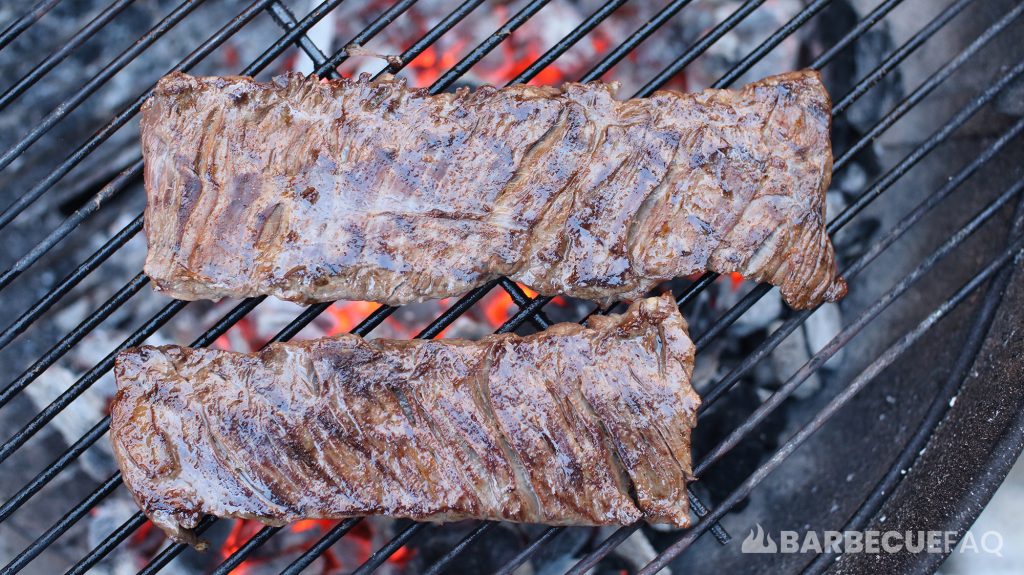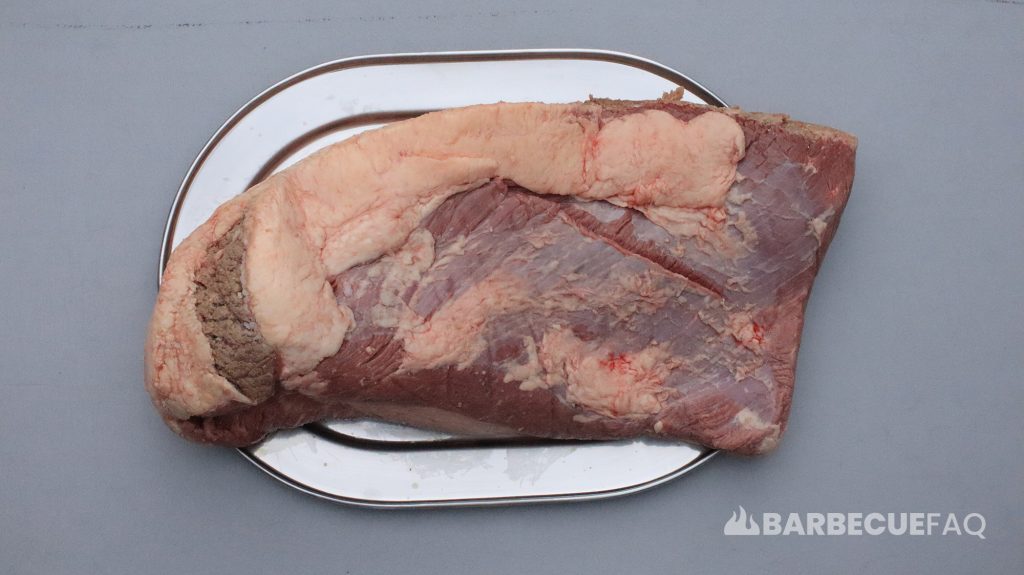There are 4 skirt steaks per cow and there’s also 2 types:
- Inside, and
- Outside
Inside comes from the underside of the short plate and outside comes from near the diaphragm muscle.

The outside skirt steak is more popular and is typically sold to restaurants.
The inside skirt steak is what you find in your grocery store.
Both can be cooked similarly, only the outside is more popular as it’s minerally, more beefy tasting, and more tender.
Skirt Steak is Typically Marinated and Seared Over High Heat to Medium-rare or Medium
Almost all skirt steak recipes will call for marinating the meat before grilling it.
Sometimes marinades will include a fruit, acid, or tenderizer to break down the collagen.
Due to it’s looser grain structure, skirt steak will readily take to marinades and absorb flavors well.

You’ll find skirt steak is used for dishes like:
- Fajitas
- Tacos
- Steak salad
- Stir-fry
- Beef on a stick
You can also broil skirt steak or sear it in a cast iron skillet on high heat.
Skirt steak can handle being pushed to around medium in terms of doneness; It contains far more fat than flank steak allowing it to remain juicy.
Skirt Steak Needs to be Cut Against the Grain to Be Tender
Due to the extensive collagen and connective tissue, if Skirt steak isn’t cut against the grain, it will be quite chewy.
Simply look at the grain and slice against it.

A Quick History Lesson on Skirt Steak and Why It’s So Expensive Today
Skirt steak used to be considered offal (refuse or waste) or “organ” meat.
Cattle Ranchers in the American South would give these tough cuts of meat to field workers – typically of Mexican origin.
In these fields is where skirt steak gained popularity as the famous “arrachera” and became a key ingredient in dishes of Mexican inspiration like fajitas and steak tacos.
The word fajita is Spanish for “little belt.”
The skirt steak is a thin cut of meat that resembles a sash, girdle, belt, or skirt.
Skirt steak is also very popular in Argentina for similar reasons. Cattle ranchers would enjoy skirt steak or “entraña” (which translates to entrails or “guts”) as part of their asados.
These days this stigma is gone and since there are only 4 skirt steaks on a cow and 2 go to restaurants, they’re expensive for regular people.




